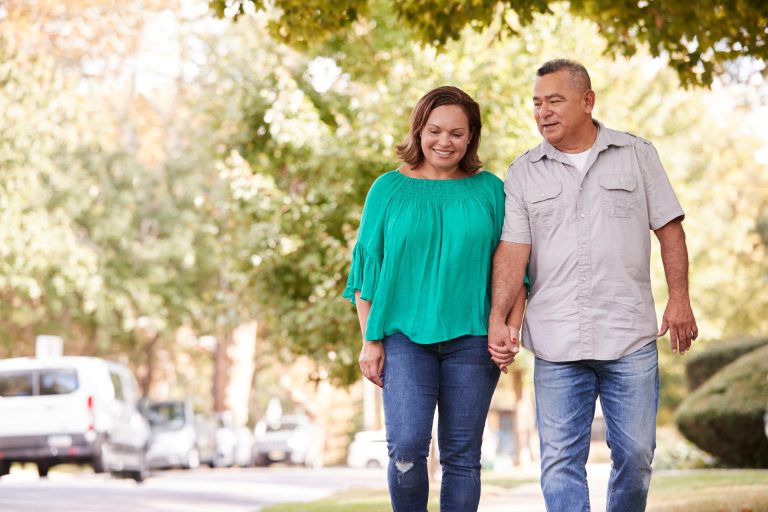
In his essay Walking, Henry David Thoreau writes of people who understood the art of Walking, that is, of taking walks, who had a genius, so to speak, for sauntering. If you’d like to develop your genius for walking and there are many good reasons to do so moving to a walkable neighborhood may be a good first step.
What Makes a Neighborhood Walkable?
At its most basic, a walkable neighborhood is, as you might expect, an environment that encourages pedestrian traffic. Specific definitions of walkability vary, but typically a walkable community features:
- Special accommodations for pedestrians, including safe sidewalks and other pathways, low speed limits for cars, crosswalks and ample street lighting
- An inviting layout with well-planned architecture, pleasing landscaping, and outdoor benches at regular intervals
- Destinations that are accessible on foot to promote walking for more than recreation
Why Seniors Choose Walkable Neighborhoods
Research suggests walkability can be a significant factor in creating happy, healthy neighborhoods, making walkable communities an attractive choice for many seniors. Some of the benefits of a pedestrian-friendly neighborhood include:
- Healthy Lifestyle. Regular walking can help you maintain a healthy weight, improve cardiovascular fitness, prevent or manage various health conditions, strengthen bones and muscles, improve mood, boost immunity, and reduce stress.
- Community connection. Being on foot, rather than in your car, makes it easier for you to engage socially with your neighbors, strengthening community bonds. Research shows that walkability boosts social capital—the measure of community networks. Higher social capital can reduce isolation and boost neighborhood safety, fostering increased levels of trust and greater community involvement.
- Improved mental health. In addition to the mood-lifting benefits of walking mentioned above, people in walkable neighborhoods report greater happiness and quality of life. Plus, when you can walk to a local destination instead of driving, you avoid the natural stress response that driving induces.
- Reduced carbon footprint. According to the Environmental Protection Agency, transportation accounted for 27% of greenhouse gas emissions in 2020. Less driving means lower emissions for every mile you walk instead of drive, you reduce your carbon dioxide emissions by 404 grams. If Americans replaced half of their short car trips one mile or less with walking or biking, carbon dioxide emissions would be reduced by two million metric tons a year. In addition to the overall environmental benefits of walkability, fewer cars on the road can mean less noise pollution in your immediate neighborhood.
- Financial benefits. Walking can save you money on gas, and it can mean lower mileage and less wear and tear on your vehicle, resulting in additional financial benefits. Plus, according to AAA, every mile you drive can cost you anywhere from 55 to 83 cents, providing an added financial incentive to choose walking over driving.
A Walkable Neighborhood at Fellowship Village
If the idea of living in a walkable neighborhood piques your interest, consider getting a firsthand look at the pedestrian-friendly neighborhoods at Fellowship Village. Here Independent Living residences, including apartments, villas, cottages, and free-standing homes, are nestled in pleasant neighborhoods where lovely grounds and walking paths invite you to amble. On-campus amenities like our five-star dining venues, art studio, indoor pool, and game room provide an array of walking destinations. Contact us to learn more or to explore residence options at any of FellowshipLIFE’s senior living communities in New Jersey.




